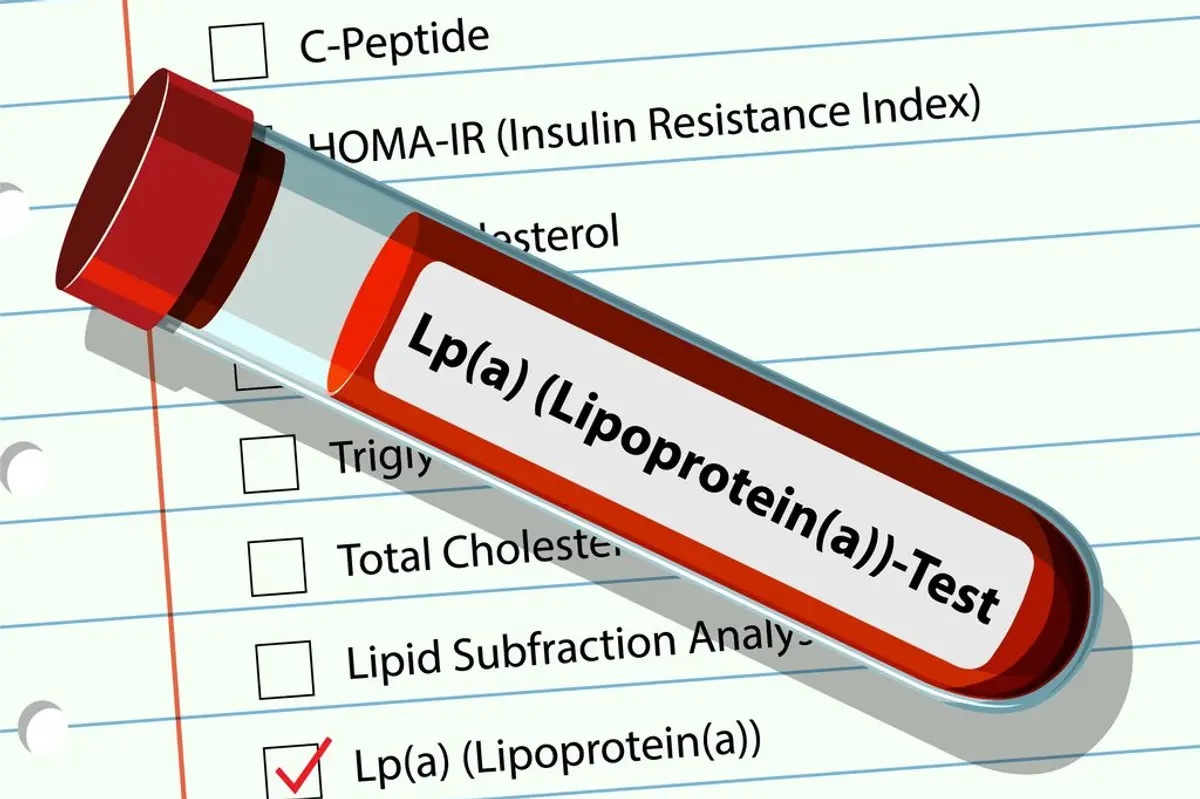Lipoprotein (a) might sound like a sexy lip plumper, but that’s not quite what it is.
Lipoprotein (a), or Lp(a) for short, is a particle that’s found in your blood. This particle transports cholesterol and can impact your heart disease risk, so it's worth learning more and potentially having your levels checked through blood work.
While lifestyle habits can influence your risk for having high Lp(a) levels, they are mostly determined by genes you inherit. Because many people with high Lp(a) levels don't have any symptoms, discussing your personal risk factors with your healthcare provider (HCP) is crucial for getting a complete picture of your heart health.
Learn more about lipoprotein (a), including risk factors, getting tested, understanding test results and how to manage high levels.
What is stealth cholesterol?
Lipoprotein (a) is sometimes referred to as “stealth cholesterol” because it’s not detected by standard cholesterol tests and often has no symptoms. Lp(a) is a plasma lipoprotein, which are particles that carry fats, such as cholesterol, in your blood.
While researchers don't fully understand the function of Lp(a), high levels are linked to heart problems. That’s because high levels of Lp(a) can build up in the walls of your blood vessels, causing plaques (fatty deposits) that narrow the blood vessels, making it harder for blood to flow and causing blockages that can lead to heart attacks or strokes.
Why should I know my lipoprotein (a) levels?
Knowing your levels of Lp(a) can help you take proactive measures to protect yourself against heart problems if necessary. High Lp(a) can increase the risk of:
- Heart attack (myocardial infarction)
- Stroke
- Aortic stenosis
- Blood clots
The likelihood of these events is greater if you have high levels of LDL cholesterol in your family, familial hypercholesterolemia (FH) or signs of coronary heart disease. Even if your other cholesterol levels are normal (including LDL) or well managed, having high Lp(a) levels still raises the risk for heart problems. Knowing your levels can give you a more complete picture of your overall cardiovascular disease risk.
What influences your Lp(a) level?
Your Lp(a) levels are almost entirely determined by your genetics. There's a specific gene called LPA that’s passed down by your parents, which is why high levels often run in families.
That means, unlike other types of cholesterol, Lp(a) levels don't change much due to lifestyle changes like diet and exercise. However, healthy lifestyle habits still have a big impact on your overall heart health and well-being.
Lp(a) levels can vary among different ethnic groups. For example, research indicates individuals of African descent and people of South Asian descent tend to have higher Lp(a) levels compared to white individuals, Asians and Hispanics. A 2024 study published in the Journal of Clinical Lipidology also found that within their patient group, non-Hispanic Black and Hispanic patients had higher Lp(a) levels.
How do you test Lipoprotein (a) levels?
Lp(a) is tested with a simple blood draw that measures levels of lipoprotein (a) in plasma. This test isn't always part of a routine cholesterol panel, so if you think you should be tested, you may have to ask for it specifically.
High Lp(a) often doesn't cause symptoms, but your HCP might test for it if you have poor leg circulation; a personal history of heart attack or stroke at an early age (under 65 for women), especially without other common risks; or a family history of early heart problems, known high Lp(a); high cholesterol or familial hypercholesterolemia (FH).
FH is a genetic condition causing high LDL cholesterol from birth. Since an estimated 9 out 10 people with FH are unaware they have it, discussing your family history with your HCP is key for appropriate testing and management.
Even when people have a higher risk for heart disease, testing tends not to be ordered as often as it should be, according to research, especially among marginalized communities, including non-Hispanic Black and Hispanic patients with lower incomes and those who live in less advantaged neighborhoods. Disparities in testing mean some people at risk might not be identified or get the care they deserve.What do lipoprotein (a) test results mean?
Lp(a) levels are typically measured in milligrams per deciliter (mg/L) or nanomoles per liter. A level higher than 50 mg/dL or 125 nmol/L is generally associated with an increased risk of heart problems. Healthy levels are generally less than 30 mg/dL or 75 nmol/L, but guidelines can vary depending on the method used or specific lab.
Risk increases along with the Lp(a) results, so the higher the level, the greater the risk. It's crucial to discuss your results with an HCP.
What can I do if I have high Lp(a)?
According to the Centers for Disease Control and Prevention (CDC), there are no FDA approved therapies specifically for managing Lp(a) and treatments are limited, though some medications may help, such as niacin, aspirin and some cholesterol-lowering drugs.
Other options include a specific procedure that removes Lp(a) from the blood, but this is reserved for very high-risk patients. New treatments are being researched and show promising results, some of which may soon be available, according to the American Heart Association. Speak to your HCP to discuss your personal treatment options.
In general, it's a good idea to adopt habits that help lower your overall heart disease risk:
- Lower LDL cholesterol levels
- Keep blood pressure under control
- Manage diabetes
- Avoid smoking
- Maintain a healthy weight and lifestyle through diet and exercise
This educational resource was created with support from Novartis.






